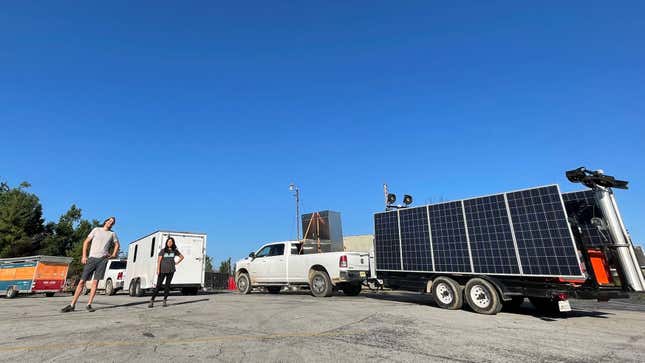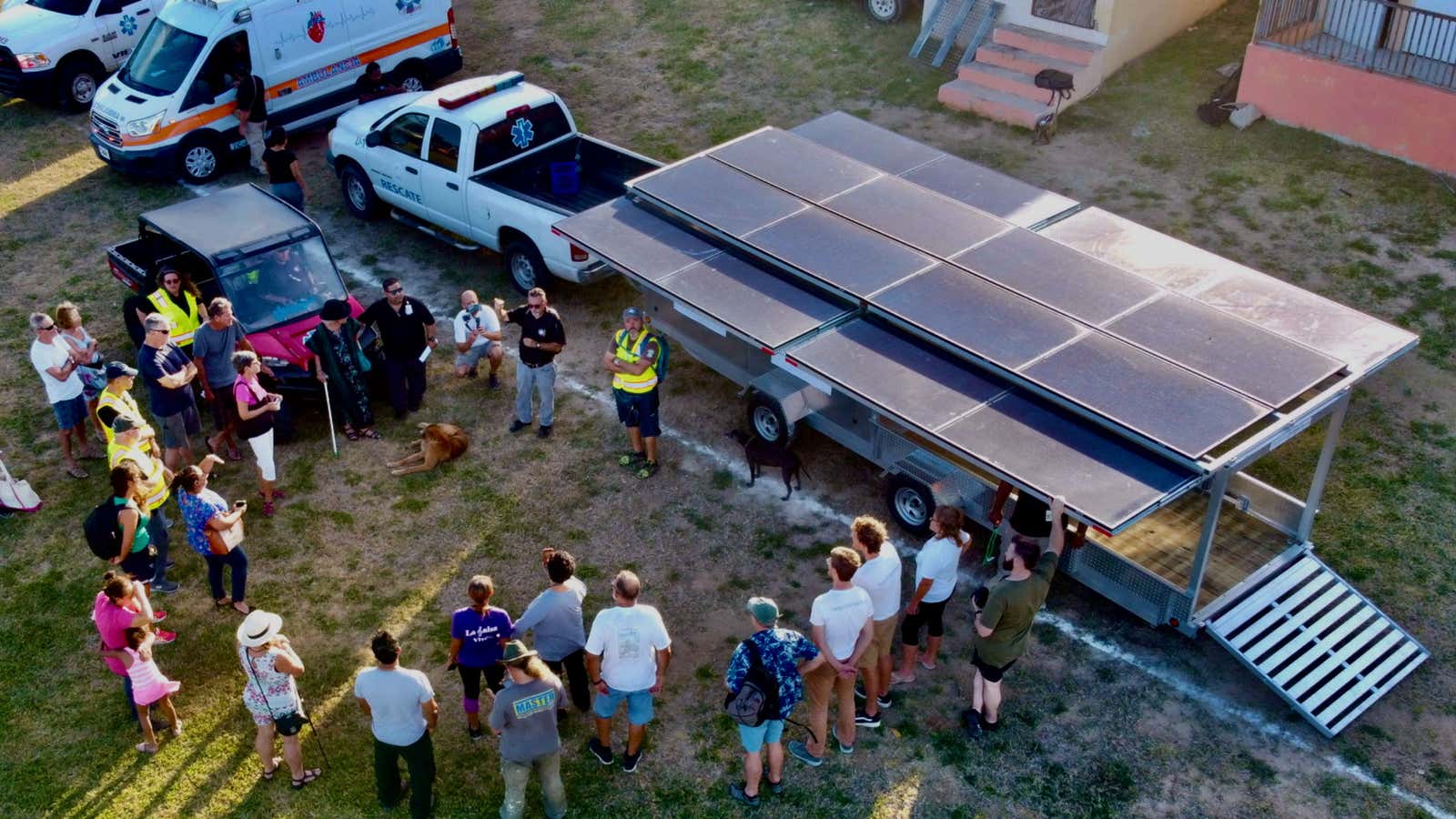Utility workers are slowly bringing electricity back to Louisiana and Mississippi after Hurricane Ida wiped out much of the region’s power grid in the dawn hours of Aug. 30. But much of the region remains in the dark: 843,000 homes and businesses were without power as of the evening of Sept. 1, only about 11% less than immediately after the storm.
The meager progress so far is attributable to the restarting of a new natural gas-fired power plant in New Orleans which began operating in March 2020. It was designed as a backstop when a storm like this cut the city off from the regional power grid. Although offline for two days after Ida, the power plant is now a few thousand utility customers in the city. But for those in New Orleans across the region reliant on the thousands of power transmission poles knocked down by the storm, full restoration of electricity could take weeks or longer.
In the meantime, some New Orleans residents and first responders will have access to trailers to power their phones, computers, medical devices, refrigerators, and other essentials—with solar energy.
The Footprint Project, a fledgling nonprofit, manages a small but growing fleet of solar panel-equipped trailers, and deploys them to disaster zones where the grid has gone out. 2021 has been a busy year: The group has responded to winter storm blackouts in Texas and wildfires in California, among other events.
The fleet—which Footprint Project founder Will Heegaard calls the “solar cavalry”—plans to reach New Orleans on Sept. 3 with its biggest deployment to date, featuring three trucks and more than 50 battery charging packs that can power everything from a phone to a mobile medical clinic. The project also helps local groups rent and operate third-party solar systems.
Batteries for better emergency response
Heegaard, a paramedic by training, started tinkering with solar panels while working on Ebola response for an NGO in Guinea, using them to power blood sample refrigerators. Back in the US, he participated in protests in North Dakota against the Dakota Access oil pipeline, and brought along a few small solar panels to run an electric heater—which turned out to need more juice than they could provide. “My partner and I almost froze,” he said. “It was my first reckoning with what these things can or cannot do.”
Heegaard went home and started working out the kinks for mobile solar units in his garage (one key rule: no radiators, coffee machines, or anything with a heating element, which drains the batteries too quickly and can be dangerous). The units operated by the project today are about the length of a horse trailer, pulled behind a heavy-duty pickup truck, without about half the solar capacity of a typical home rooftop unit.

Since 2018, when the nonprofit was founded, it has dispatched the solar trailers to earthquakes, tornadoes, COVID clinics, racial justice rallies, and the occasional music festival. Along the way, technology improvements have made the systems cheaper and more efficient.
“Breakthroughs in the electric vehicle industry are lowering the cost of lithium batteries, which is really exciting,” Heegaard said. “A lot of this was impossible five years ago.”
The group has wrangled in-kind donations from solar and battery companies like SimpliPhi and Sunnova, as well as financial support from the major utility Duke Energy and multinational energy consulting firm Schneider Electric. If US utilities were better prepared for climate change impacts, said Heegaard, a group like his may not be necessary. And solar trailers can’t keep major facilities, like a hospital or grocery store, running. But for individuals and families, solar is a cheaper, more flexible, and cleaner alternative to fossil-fired emergency systems.
“No one builds a community space around a diesel generator,” he said. “But we drop these things in, and people can get a vision that the community will come back.”
